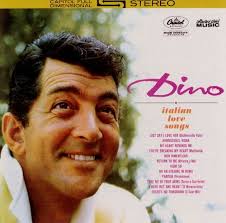by Bob Sparrow
 No, this is not about Jesse James, Butch Cassidy or Bonnie & Clyde, but you may better relate to them when you’re finished reading this.
No, this is not about Jesse James, Butch Cassidy or Bonnie & Clyde, but you may better relate to them when you’re finished reading this.
I don’t typically spend a lot of time looking at my credit card bill; two reasons: usually it’s zero so there’s not much to look at, secondly if it isn’t zero I immediately pay whatever is owed and file the statement. For whatever reason, last month, I looked over my last bill fairly carefully and I noticed some scary numbers and several ‘warnings’ from the credit card company.
The first ‘warning’ was regarding the Annual Percentage Rate for various activities. For example, a regular ‘purchase’ or a ‘cash transfer’ had an Annual Percentage Rate of 13.74%. A nice return if you can get it. Oh, I guess they can! I thought that seemed rather high, until I saw what it cost for a ‘Cash Advance’ . . . 25.49%! I’m surprised there wasn’t a quote from Guido, the leg-breaker, telling me that they have ways of making me pay.
The other ‘warning’ I noticed for the first time was under the ‘Payment Information’ heading. I had paid for part of an up-coming trip (yes, I’m going to get off my fat ass later this year and go somewhere!) with my credit card, to the tune of about $5,000 and thus I was ‘warned’:
heading. I had paid for part of an up-coming trip (yes, I’m going to get off my fat ass later this year and go somewhere!) with my credit card, to the tune of about $5,000 and thus I was ‘warned’:
If you make no additional charges using this card and each month you pay only the minimum payment, you will pay off the balance shown on this statement in about 19 years! And you will end up paying an estimated $11,575!!!
It goes on to tell me that if there is a penalty, like a late fee, there is a limit on what interest rate the banks can charge us – 29.99%. Well thank goodness it’s not 30%!!!
I know this has been going on for a long time, but as I researched further, I realized just how the banks have been ripping us off for years and I’M MAD AS HELL AND I’M NOT GOING TO TAKE IT ANY LONGER! OK, maybe I am, because I don’t have any other alternative and that’s just the way the banks like it.
Here’s some historical data to chew on, or perhaps it’ll chew on you.
The bank’s rate to borrow money (the discount rate) has dropped from around 14% in the early 80’s to its current level of 1%, while the banks have only dropped their credit card rate from 17% in 1980 to 13.7% today. Let me do the math for you, the bank’s rate to borrow money dropped by 93% during that time period while their credit card rate dropped by only 20%. But they certainly dropped their Certificate of Deposit rate quick enough; that rate in 1985, for a 1 year CD was up to around 12%, today it’s around .25%, yes, that’s right ¼ of 1%! Have you noticed that virtually all the banks have about the same rate for everything? That’s called ‘price fixing’ which, in effect has all the banks acting as one, which is a monopoly. Both price fixing and monopolies are supposed to be illegal! To support the price fixing argument, take a look at mortgage rates; in the 1980’s they were as high as 18% for a 30-year mortgage, today they’re in the 4’s. Why have they dropped so precipitously? Because there are institutions other than banks that make home loans, so there is honest competitiveness. I can guarantee you that if banks were the only ones making home loans, those rates would be somewhere around 12% today.
But there is a reason that banks need to rip us off, they have some fairly high compensation packages to satisfy. Brian Moynihan, CEO of Bank of America made  $13,722,849 last year. J.P. Morgan Chase CEO, James Dimon made a hefty $28,000,000 in 2016. Wells Fargo CEO, Timothy Sloan made a paltry $12,830,000 last year, but Wells had to pay John Stumpf, their former CEO, who left amid the ‘fake account’ debacle, $130,000,000 in severance pay. Boy, I guess they taught him a lesson!
$13,722,849 last year. J.P. Morgan Chase CEO, James Dimon made a hefty $28,000,000 in 2016. Wells Fargo CEO, Timothy Sloan made a paltry $12,830,000 last year, but Wells had to pay John Stumpf, their former CEO, who left amid the ‘fake account’ debacle, $130,000,000 in severance pay. Boy, I guess they taught him a lesson!
So the next time you see a bank advertisement on TV or see one of those ‘warm and fuzzy’ posters in your branch, just remember that they are just trying to find another way to rip you off.
Anybody want to help me rob a bank? I would be honored to be in the Butch Cassidy Bank Robbery Museum.










